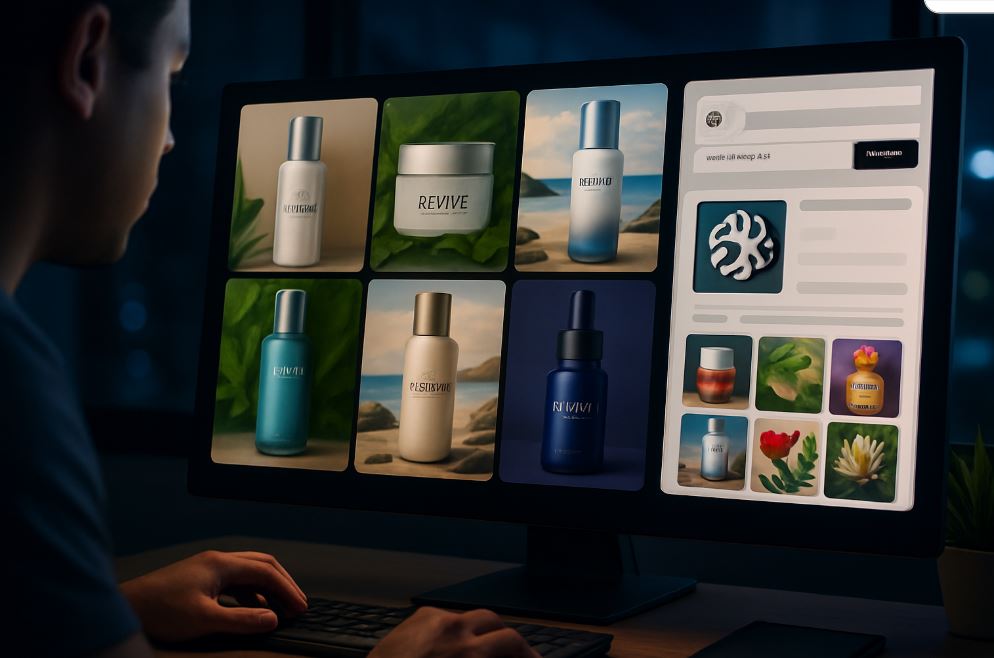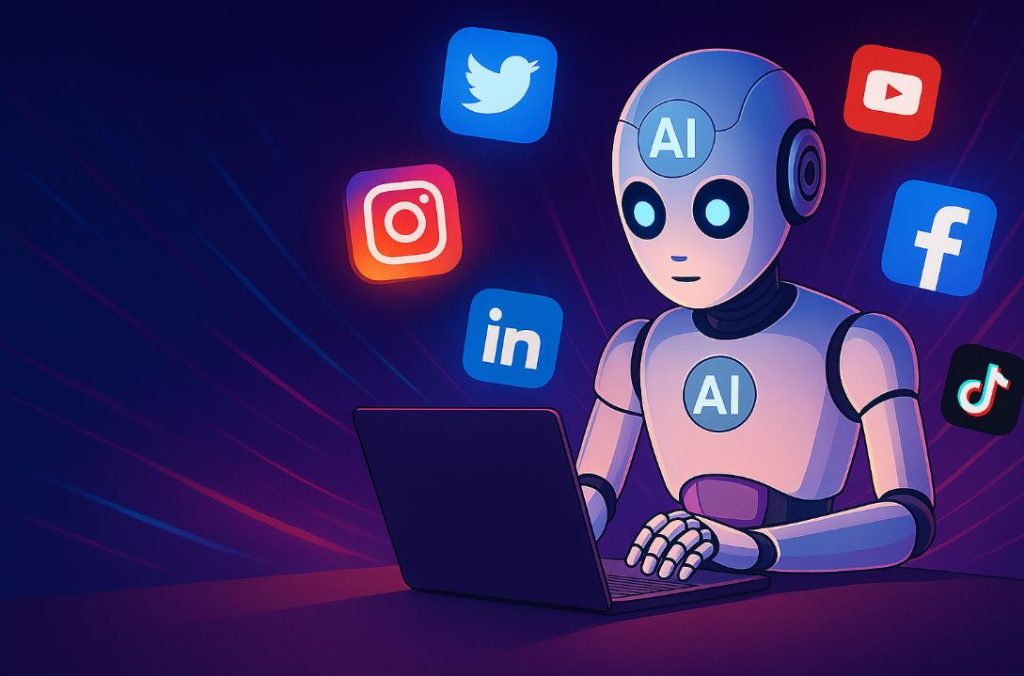As a designer with a twenty-year career, I’ve seen the need for visual content explode. Creating eye-catching graphics is now a daily task for brands and creators. But creating visuals one by one each day is horribly unproductive. I remember burning out from having to create a new graphic each morning. This kind of daily grind is not only time-consuming, it also drains the creative juices out of you, with no time for higher-level thinking.
There is a better way: batch creation. Batch designing is creating several visuals in a single dedicated session. It’s the secret that allows you to design quicker but actually remain more inspired. In this blog post, I’ll tell you how to schedule batch design sessions so that you can save time and retain your creative mojo.
what is batch creation in visual design
Batching in visual design means producing lots of visual assets in a focused single session, rather than creating them individually one after another across the course of days or weeks.
The idea behind batching is to eliminate the mental tiredness of switching tasks repeatedly and to ensure that there’s a common look and feel to all your designs.
Instead of starting each day from scratch and draining your creative energies, you get into a flow of creativity and complete a whole set of imagery in a single session.
New software is making all of this even simpler: AI-driven design tools like Canva AI, Microsoft Designer, and Adobe Firefly can accelerate your workflow. They assist you in brainstorming, creating versions, and customizing images at speeds previously unimaginable. To go even deeper, check out how AI tools can help you produce visuals up to ten times faster while maintaining high quality.
Batching your design tasks, particularly with intelligent AI assistance, allows you to create more, be more consistent, and do so with far less stress.
why batch creation improves visual productivity
Here are some reasons why batching your visual work can totally change your productivity:
-
Deep focus and flow: Batching enables you to stay in design mode without interruption. By keeping an entire time block exclusively for designing, you avoid the stop-and-start mental fatigue of disjointed daily tasks. Such deep focus has a tendency to trigger flow states where creativity becomes automatic.
-
Visual consistency: Designing a group of visuals at the same time will enable you to keep the style consistent. Your fonts, colors, layout principles, and tone will all fall into place when you are designing them one after another in one sitting.
-
Time saved: Not having to switch tasks all the time saves tons of time. No re-opening files, searching for assets, and mentally reloading your brand style on a daily basis.
-
Creativity unleashed: With the day-to-day design drudge taken out, your mind is free to consider the larger narrative. Your mind begins thinking in visual tales, in campaigns, in themes, not just in stand-alone posts.
Batching not only accelerates production, it renders the entire creative process lighter, easier, and more strategic.
how to effectively batch create visuals
step 1: predefine visual themes and series
Prior to your session, determine the type of visuals you require. Definite series or subjects give direction to your creative energy.
Some examples of themes you can batch:
-
A series of product launch announcements
-
A seasonal holiday promotion
-
A week educational tips series
-
Inspirational quotes on Instagram
Having them beforehand saves you from attempting to make them up while in the session. You can simply focus on implementation.
Personally, I prefer to write down rough concepts for 2, 3 series ahead of time. It’s a little brief for myself that I can check back on throughout the design sprint.
step 2: utilize flexible templates
Your best friend while producing in quantity is templates.
Design a number of versatile base templates in your preferred tool (e.g., Canva, Figma, or Adobe Express). Then, during your session, you merely copy and adapt them rather than beginning from the ground up each time.
An effective batch template includes:
-
Space for text variations
-
Image placeholders
-
Brand fonts and colors already used
This way, you maintain consistency and massively reduce repetitive work.
When I batch for clients, I like to have some master templates open. It’s like having a great design skeleton that I will be dressing differently each time.
step 3: prepare resources and AI prompts
Collect whatever you may require before the session begins:
-
Stock images and visuals
-
Brand logos, color schemes, font
-
Any writing completed (captions, title, quotes)
-
AI prompts if you’re creating content (e.g., a Midjourney prompt to create background art)
It is like presenting your artistic “mise en place.”
This spares you the aggravating and flow-stopping process of searching for lost assets in the middle of creation.
When I utilize AI tools, I also prepare some prompts beforehand based on the themes. In that manner, I can create variations extremely quickly without getting hung up on wording.
If you’re using Midjourney or similar tools to generate assets, this guide on how to create consistent visual styles using Midjourney for batch production can help ensure every visual feels like it belongs to the same family.
step 4: execute a targeted creative sprint
And now the magic happens: put yourself into a 90-minute design sprint.
Disable the notifications, close your inbox, and create a distraction-free zone.
Over this sprint:
-
Highlight mass-producing first drafts, not error-free finished products.
-
Favor momentum over detail.
-
Continue moving along with every design without overthinking.
Only after you’ve completed the entire batch do you return for refining.
Keeping “creation” and “editing” stages separate keeps you in the flow for longer and avoids bogging you down.
In my own experience, the initial 20 minutes are sluggish, but after that, it’s pure momentum. By the end of 90 minutes, I would have 10, 15 solid drafts that I can edit.
best practices for creating effective batches visually
Following numerous tries (and some catastrophic sessions), the following are a few recommendations that significantly enhance batch creation success:
-
Work in airplane mode: Eliminate all distractions. Creative flow is disrupted with every ping and notification.
-
Set a numerical goal: Attempt something like “12 graphics in 2 hours.” A numerical goal keeps your mind active and alert.
-
Keep a style guide open: Have your master template or brand book open next to your canvas. This grounds each design decision in the moment.
-
Organize by topic: Organize your designs into series-specific folders tidily after the session. This saves hours when planning out content to publish later.
And if part of your batching process involves retouching or adapting photos, batch editing with Pixlr is a quick and lightweight way to finalize your visuals before scheduling them.
Batching is a gym workout for creativity: the more frequently you practice, the stronger and more confident you’ll become.
Batching is one of the simplest and most effective time-saving techniques and ways to preserve your creative energy as a designer.
By breaking up your work into concentrated sprints rather than daily increments, you render your production process more effective and allow more room for inspiration.
Since I’ve incorporated batch creation into my weekly schedule, not only do I complete more projects faster, but I also have more energy and feel less bogged down by the work itself.
If you’re determined to develop the sustainable design habit, begin batching your visuals today.
And don’t be afraid to apply AI tools judiciously to accomplish it even more quickly, they’re wonderful helpers when you put them to use with purpose.
Batching is not only about productivity but about getting back your creativity.
What about you? Have you tried batching your visuals before, or are you more of a one-design-a-day kind of creative? I’d love to hear how you manage your visual workflow favorite tools, time-saving hacks, frustrations, or even what’s been holding you back. Let’s swap ideas in the comments!



